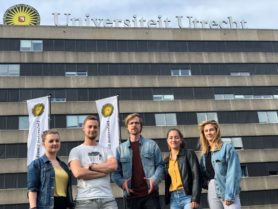Strobilus – Clean air solutions

- What organism or natural systems inspired the design?
- Nature has evolved refined strategies for capturing particles in the size range of viruses to macro fauna. The interplay between physics and biology delivers systems adapted for highly specialised particle capturing. One of these is the ability of conifer trees to capture pollen grains as small as 20 µm in size from trees that are miles away. The structure of the cone redirects airflow, filtering out species-specific pollen and that settle in the female receptive part. Another school example of fine tuning air dynamics and dispersal is the dandelion seed (pappus). Particles are trapped into a fluid. Particle-capturing in fluids has convergently evolved many times in nature, hence its strong mechanism, it can be seen in bivalves, conifer pollination, sea cucumber feeding and more.
- What is the problem that is being solved?
- Air pollution is a major environmental and public health problem. Atmospheric particulate matter (PM) has a direct effect on global warming. Eliminating all PM would result in a 20-48% net warming reduction within 5 years, whereas eliminating 30% CO2 would have the same effect only after 50-200 years.
- How does the design work?
- The system makes use of non-obstructive filtering, thereby avoiding pressure drop and energy requirements. Particles are concentrated in readily available residues providing PM devoid emissions. We aimed to collect PM at the source of pollution (combustion of fuels). We created an end-of-pipe solution that can be easily implemented and capture a broad range of particles.

- Team members
- Toon Driessen, Sanne Grevink, Julia van Duijnhoven, Mathias Baumann, Pilar Peregrín Sánchez



